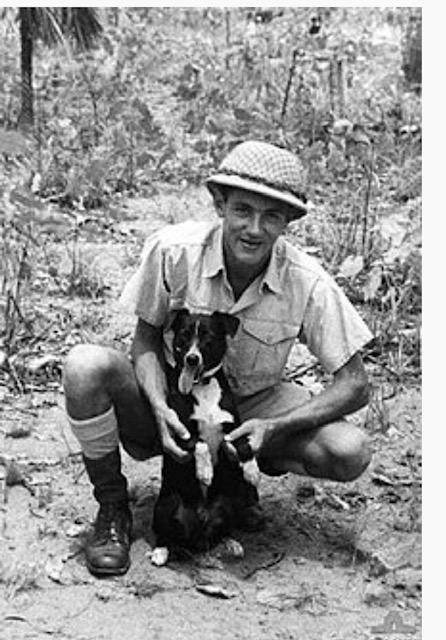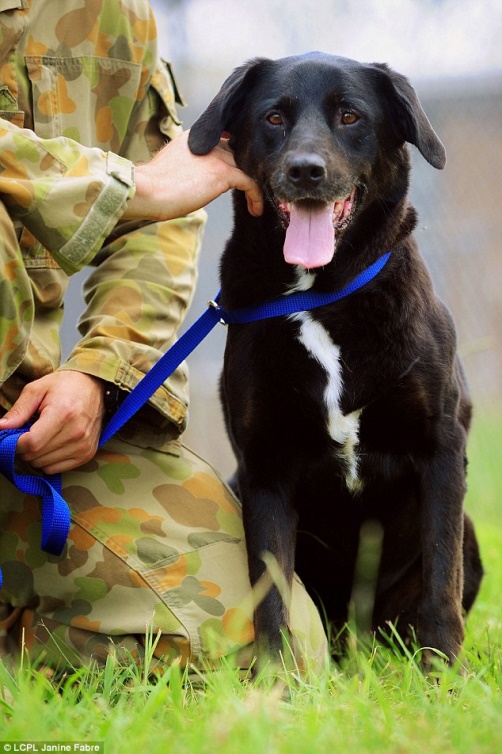 On the eve of ANZAC day we thought it would be fitting to celebrate some of our heroic animals who have served with our armed forces. Throughout history animals have accompanied men and women into combat. It is estimated that over 16 million animals served in World War I in various roles.
On the eve of ANZAC day we thought it would be fitting to celebrate some of our heroic animals who have served with our armed forces. Throughout history animals have accompanied men and women into combat. It is estimated that over 16 million animals served in World War I in various roles.
Donkeys, horses and camels have been used for modes of transport and to carry necessary supplies such as food, water, ammunition, medicine and even the injured soldiers from the front line to medical huts for treatment. Pigeons and dogs were heavily relied on for communication during the First World War where they were used to send and receive messages between the allied forces especially when the radio connections failed or were damaged in combat. They have also been known to initiate rescue efforts that would have otherwise had a very different outcome. Dogs also use their keen senses such as smell and hearing to not only sniff out bombs but to detect enemy aircraft, with these they can carry out the jobs that are beyond human capability.
Here are some inspirational stories where animals have gone above and beyond to assist soldiers, working alongside them, risking their own lives whilst saving others.
Simpson and his Donkey
 This is one of the most legendary stories in Anzac history during WWI. Shortly after landing in Gallipoli in 1915, Private John Simpson Kilpatrick befriended a desert donkey who was known by various nicknames including Murphy, Abdul and Duffy. The pair were regularly seen fearlessly carrying injured soldiers that Simpson loaded onto the donkey’s back then transporting them from the frontline to the medical huts for treatment . They did this totally unarmed and were completely exposed to gunfire and shrapnel. It is said that they saved 300 men during their time together, and it is their selflessness and tenacity that embodied the Anzac spirit during the Gallipoli campaign. Murphy was later awarded the RSPCA’s Purple Cross for heroism.
This is one of the most legendary stories in Anzac history during WWI. Shortly after landing in Gallipoli in 1915, Private John Simpson Kilpatrick befriended a desert donkey who was known by various nicknames including Murphy, Abdul and Duffy. The pair were regularly seen fearlessly carrying injured soldiers that Simpson loaded onto the donkey’s back then transporting them from the frontline to the medical huts for treatment . They did this totally unarmed and were completely exposed to gunfire and shrapnel. It is said that they saved 300 men during their time together, and it is their selflessness and tenacity that embodied the Anzac spirit during the Gallipoli campaign. Murphy was later awarded the RSPCA’s Purple Cross for heroism.
‘The little known war heroes’
Carrier Pigeons were used in both WWI and II for communication. They were trained to send out messages from HQ to the front line. This was extremely important as the radio connection could not be fully relied upon as it often failed during combat. Two pigeons were famously awarded the Dickin medal in 1947 while serving with the Australian Armed Forces during World War Two. Their heroism occured in 1945 when Army Boat 1402 containing Australian troops crashed onto the coast of Wadou beach in the Solomon seas. As the soldiers were completely isolated with no form of communication, they sent out their only hope in the form of one brave pigeon. The pigeon who’s only identity is DD.43.T.139, was sent out to brave the harsh conditions of a tropical storm with dangerous winds and torrential rain to deliver the request for rescue. Amazingly he managed to not only deliver the message but he did it in 50 minutes covering 40 miles in the process! The rescue mission was a success and the precious cargo, soldiers and ammunition were saved. He went on to perform another 24 successful flights as so was a fitting recipient of his honour.
Man’s Best Friend
We all know that our dogs can be extremely smart and courageous in everyday lives, as seen with Guide Dogs, Assistance Dogs for the hearing impaired and disabled and Therapy dogs as used in the many cases of PTSD. Dogs have also played major roles during armed conflict with numerous accounts of their bravery. I have chosen three stories below to highlight our courageous four legged friends.
‘Smoky’

A tiny little Yorkshire terrier known as Smoky, weighing in at only 1.8 kg, fought alongside Australian troops in World War Two. In 1945 he worked with the engineers to lay important communication wires underneath a 21 meter wide airstrip in the Philippines. A string was tied to Smoky’s collar so that he was able to lead the wire through the pipe all the way to the other end in only minutes, a task that would have taken the soldiers three days to complete. Due to this amazing feat, the teletype and phone lines were enabled between the US and Allied forces.
It was later when a Corporal became seriously ill with Dengue fever and Smoky slept alongside him in the hospital bed for companionship that the idea was formed for the use of dogs in therapy. From here Smoky served in the 42nd General hospital in Brisbane as the first documented therapy dog for returning soldiers with post traumatic stress. This courageous little canine was awarded the RSPCA’s Purple Cross for his outstanding service.
Gunner- ‘The Air raid alert dog’
 Gunner’s story begins in 1941 when he was found as a 6 month old stray under a bombed out hut with a broken leg. After the Kelpie’s leg was surgically repaired in the field hut, he was given the name Gunner and serial number 0000 and inducted into the airforce as a service dog. It was his handler Percy Westcott who first noticed Gunners extraordinary skill of sounding out approaching Japanese aircraft when he began to whine 20 minutes before their arrival. It soon became obvious how accurate he was in recognising enemy aircraft and ignoring allied aircraft that as soon as Gunner became distressed, the Wing Commander gave permission to sound the air raid siren.
Gunner’s story begins in 1941 when he was found as a 6 month old stray under a bombed out hut with a broken leg. After the Kelpie’s leg was surgically repaired in the field hut, he was given the name Gunner and serial number 0000 and inducted into the airforce as a service dog. It was his handler Percy Westcott who first noticed Gunners extraordinary skill of sounding out approaching Japanese aircraft when he began to whine 20 minutes before their arrival. It soon became obvious how accurate he was in recognising enemy aircraft and ignoring allied aircraft that as soon as Gunner became distressed, the Wing Commander gave permission to sound the air raid siren.
Sarbi
 Sarbi was a beautiful Labrador-Newfoundland cross who was adopted by the Australian Defence Force to become an Explosive Detection Dog (EDD). Her important task was to sniff out explosives during her several tours of Afghanistan. It was during her second tour that she famously disappeared during a Taliban ambush. A gunshot had managed to sever Sarbi’s clip on her lead and she took off in fear. The soldiers were distraught and searched for her after the battle without success. She was officially declared ‘missing in action’ after 3 weeks. Amazingly after 13 months she was discovered by an American soldier who after giving her a few signals realised that she was a military dog. She was eventually given back to her handler, David. Sarbi received The Purple Cross in 2011 and has also been awarded the ‘ War Dog Medal’ and the ‘Canine Service Medal’. Sarbi has a park in the northern Brisbane suburb of Warner named in her honour alongside a statue of her which was unveiled in 2015.
Sarbi was a beautiful Labrador-Newfoundland cross who was adopted by the Australian Defence Force to become an Explosive Detection Dog (EDD). Her important task was to sniff out explosives during her several tours of Afghanistan. It was during her second tour that she famously disappeared during a Taliban ambush. A gunshot had managed to sever Sarbi’s clip on her lead and she took off in fear. The soldiers were distraught and searched for her after the battle without success. She was officially declared ‘missing in action’ after 3 weeks. Amazingly after 13 months she was discovered by an American soldier who after giving her a few signals realised that she was a military dog. She was eventually given back to her handler, David. Sarbi received The Purple Cross in 2011 and has also been awarded the ‘ War Dog Medal’ and the ‘Canine Service Medal’. Sarbi has a park in the northern Brisbane suburb of Warner named in her honour alongside a statue of her which was unveiled in 2015.
As evidenced in these amazing stories, animals not only make the best friends and companions but can work alongside humans in the most challenging situations often risking their own lives for us.
In recognition of their courage, the 24th February has now been officially declared “Australia War Animal Day”. Join us in wearing purple poppies on that day to commemorate the sacrifice of our four legged and feathered diggers.
We wish everyone a peaceful ANZAC day tomorrow and hope that everyone takes a moment to reflect with gratitude the role so many have played to provide us with the life we know today.
